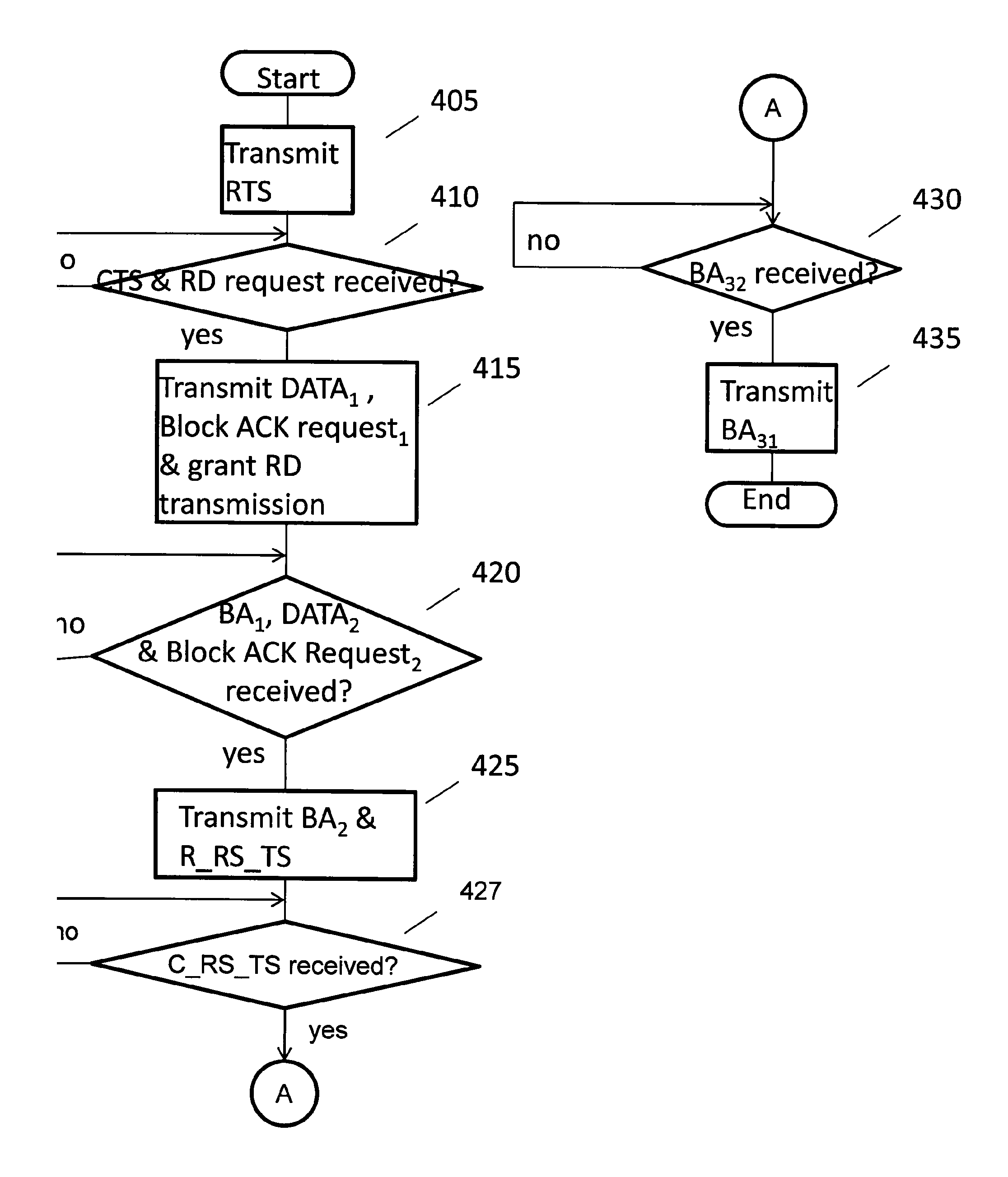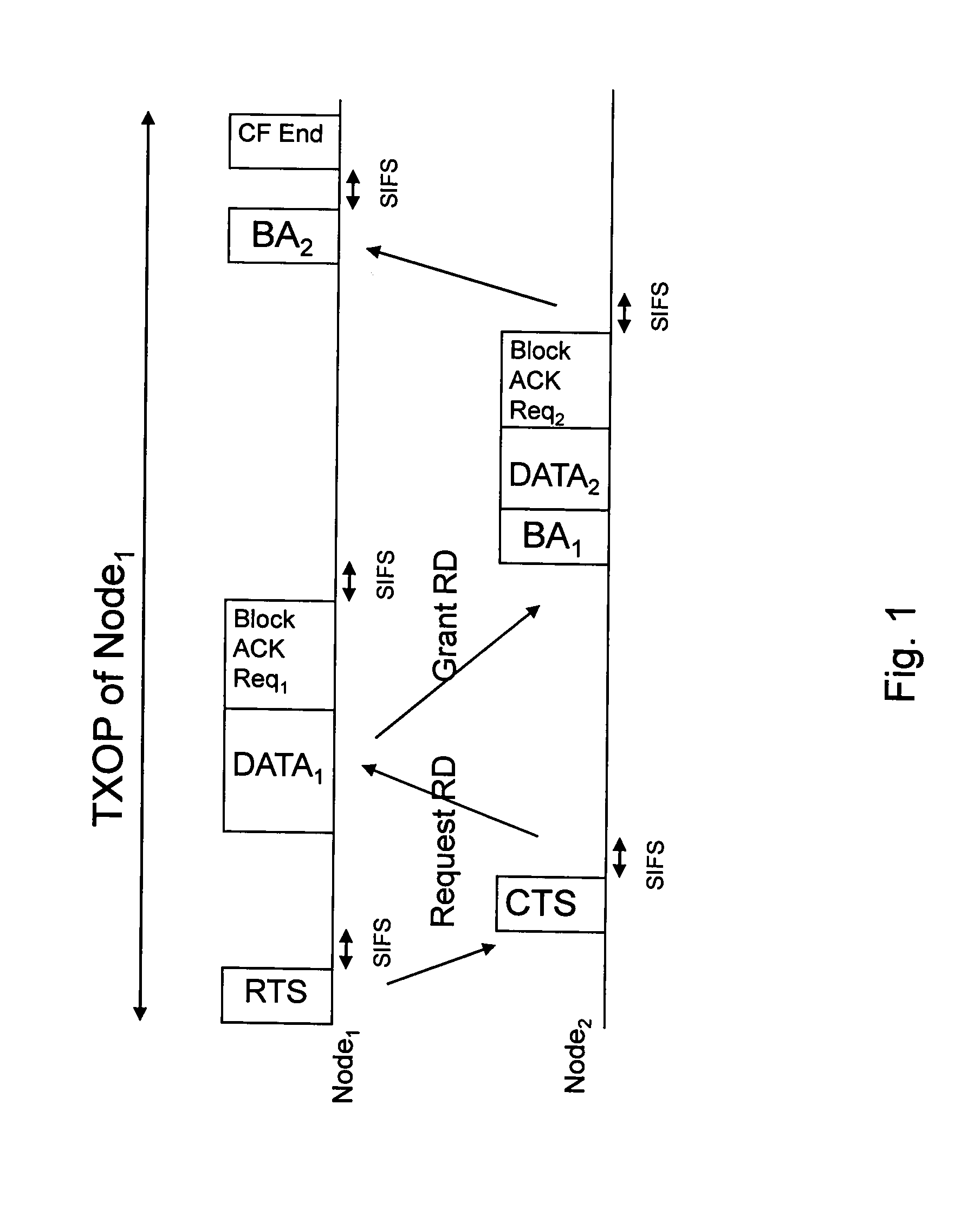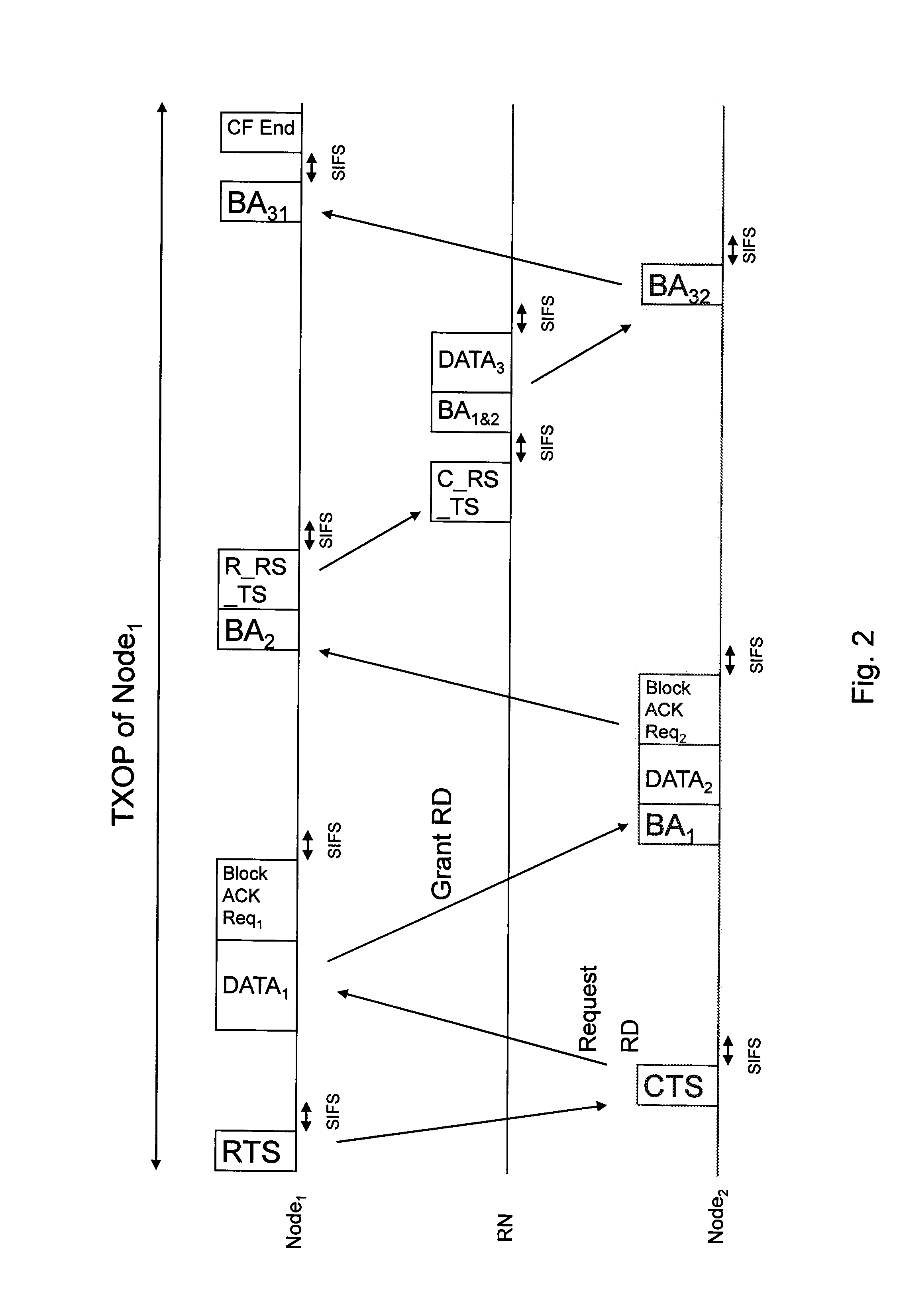Triple-play protocol -- a media access control layer protocol for transmissions in network-coded three node bidirectional cooperation
a network-coded, bidirectional cooperation, three-node technology, applied in multiplex communication, multiplex multiplex, frequency-division multiplex, etc., can solve the problems of complicated communication (transmissions) suffer the transmission between the two nodes, etc., to achieve high throughput and facilitate backward compatibility
- Summary
- Abstract
- Description
- Claims
- Application Information
AI Technical Summary
Benefits of technology
Problems solved by technology
Method used
Image
Examples
first embodiment
[0047]Referring now to FIG. 4, which is a flowchart of the operation of Node1 in accordance with the principles of the Triple-play protocol of the present invention. At 405 Node1 transmits (communicates, sends out) a RTS signal (message). A test is performed at 410 to determine if Node1 has received a CTS signal (message) and a RD transmission request message (signal) in response to the RTS message (signal) that Node1 transmitted. If Node1 has not received the CTS signal (message) and the RD transmission request message (signal) then processing returns to 410. If Node1 has received the CTS signal (message) and the RD transmission request message (signal) then at 415 Node1 transmits (communicates, sends out) DATA1, Block ACK request1 and RD transmission grant. A test is performed at 420 to determine if Node1 has received BA1, DATA2 and Block ACK request2. If Node1 has not received the BA1, DATA2 and Block ACK request2 signal (message), then processing returns to 420. If Node1 has rec...
second embodiment
[0050]Referring now to FIG. 7, which is a flowchart of the operation of Node1 in accordance with the principles of the Triple-play protocol of the present invention. At 705 Node1 transmits (communicates, sends out) a RTS signal (message). A test is performed at 710 to determine if Node1 has received a CTS signal (message), a C_RS_TS message (signal) and a RD transmission request message (signal) in response to the RTS message (signal) that Node1 transmitted. If Node1 has not received the CTS signal (message), the C_RS_TS signal (message) and the RD transmission request message (signal) then processing returns to 710. If Node1 has received the CTS signal (message) and the RD transmission request message (signal) then at 715 Node1 transmits (communicates, sends out) DATA1, Block ACK request1 and RD transmission grant. A test is performed at 720 to determine if Node1 has received BA1, DATA2 and Block ACK request2. If Node1 has not received the BA1, DATA2 and Block ACK request2 signal (...
PUM
 Login to View More
Login to View More Abstract
Description
Claims
Application Information
 Login to View More
Login to View More - R&D
- Intellectual Property
- Life Sciences
- Materials
- Tech Scout
- Unparalleled Data Quality
- Higher Quality Content
- 60% Fewer Hallucinations
Browse by: Latest US Patents, China's latest patents, Technical Efficacy Thesaurus, Application Domain, Technology Topic, Popular Technical Reports.
© 2025 PatSnap. All rights reserved.Legal|Privacy policy|Modern Slavery Act Transparency Statement|Sitemap|About US| Contact US: help@patsnap.com



